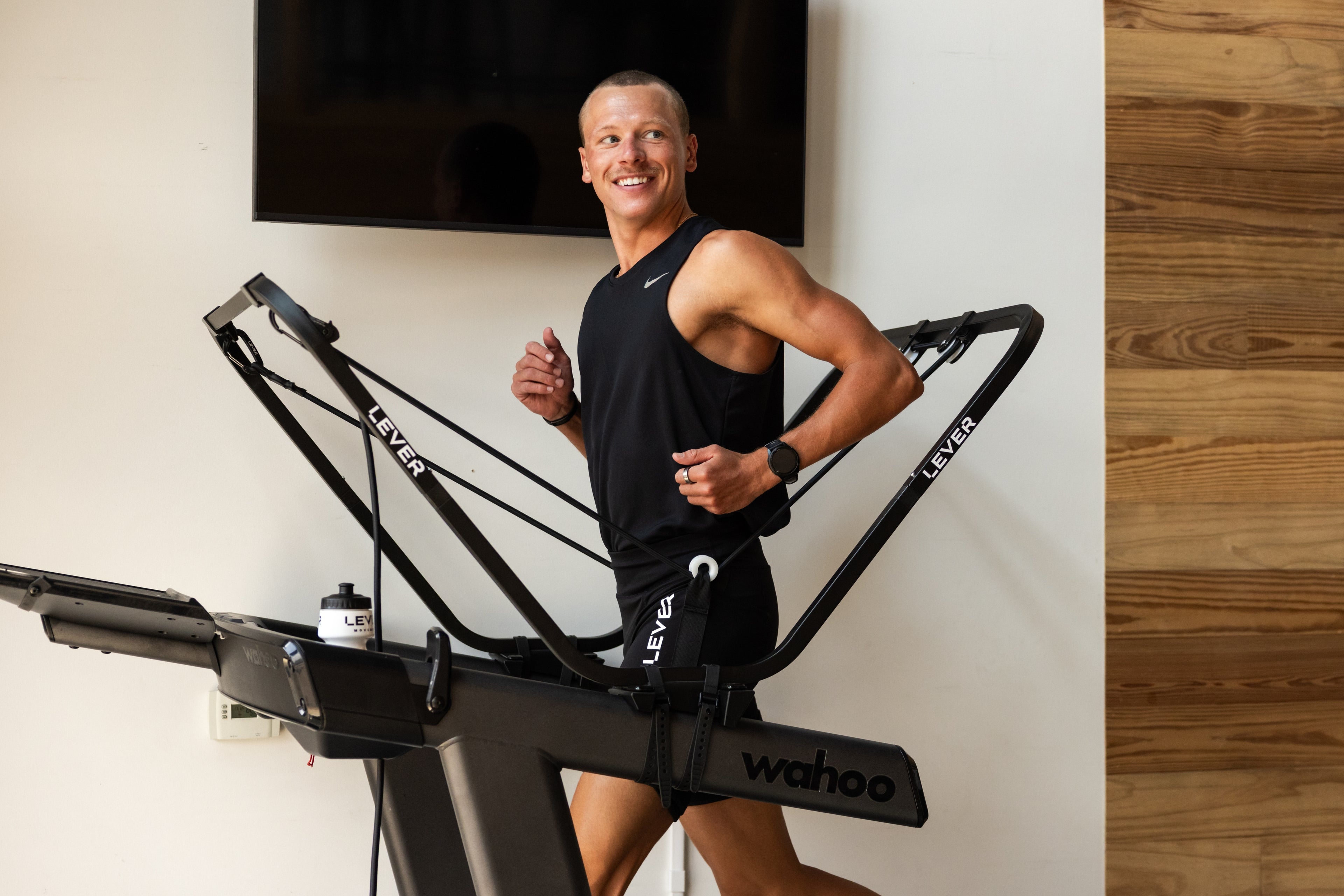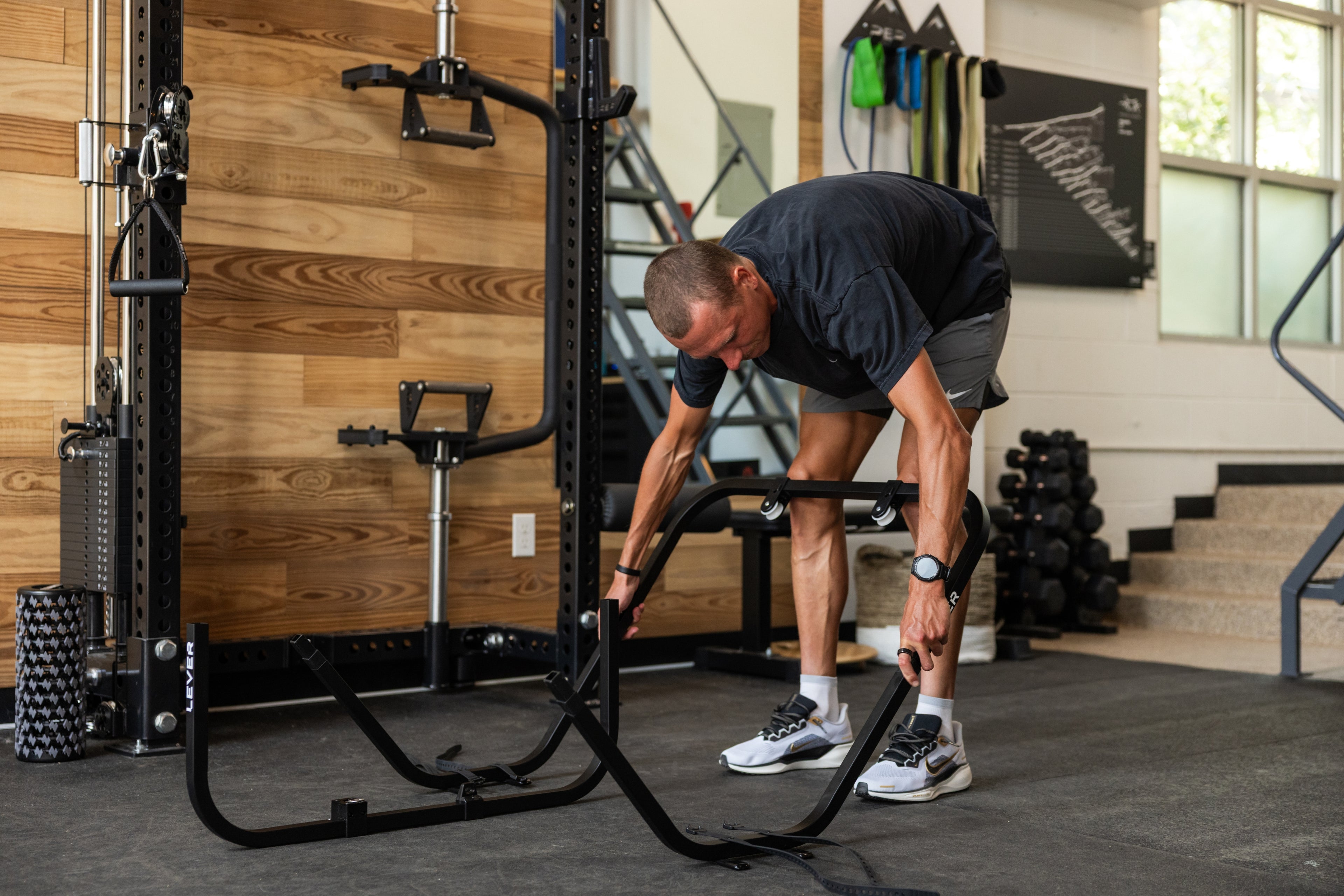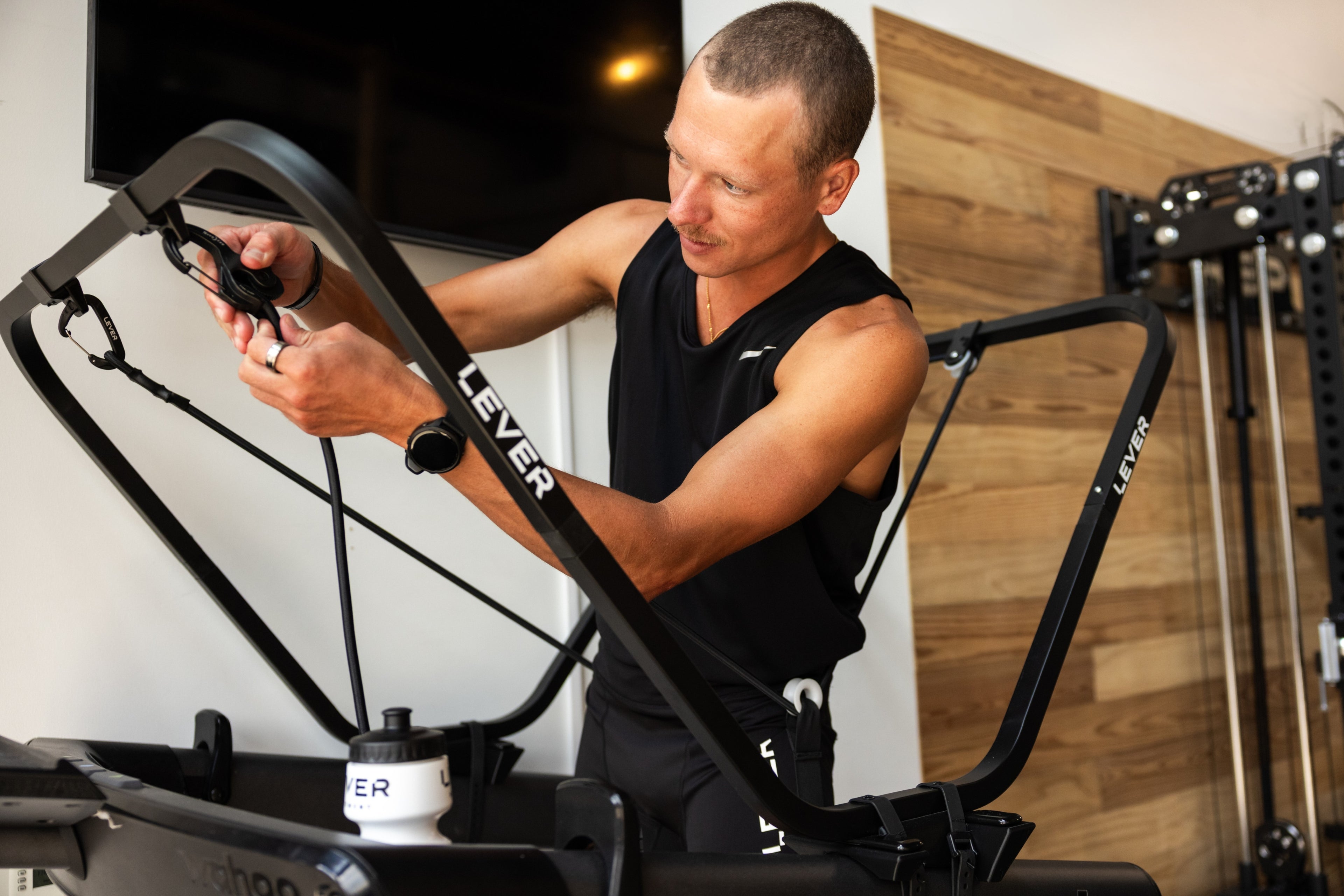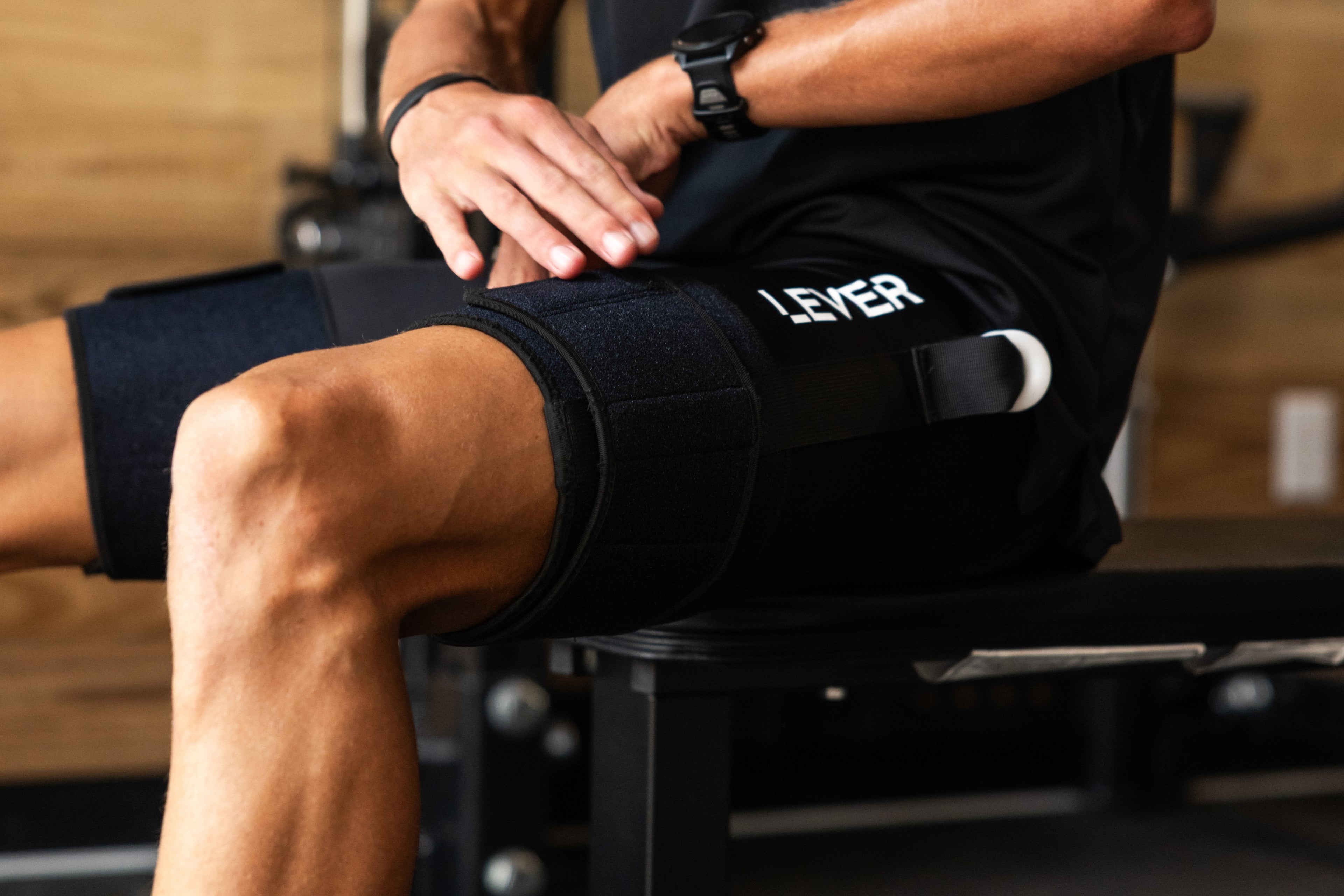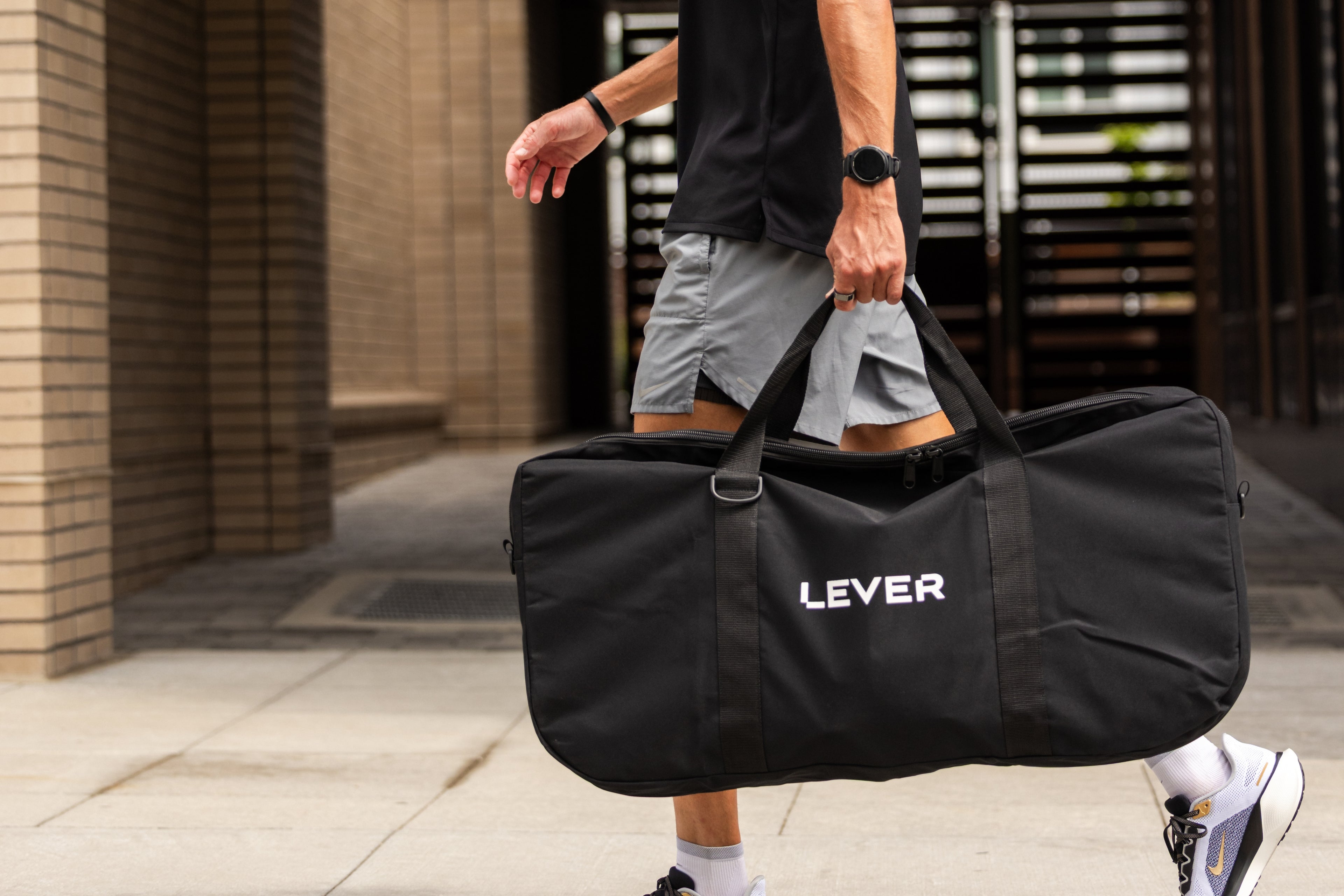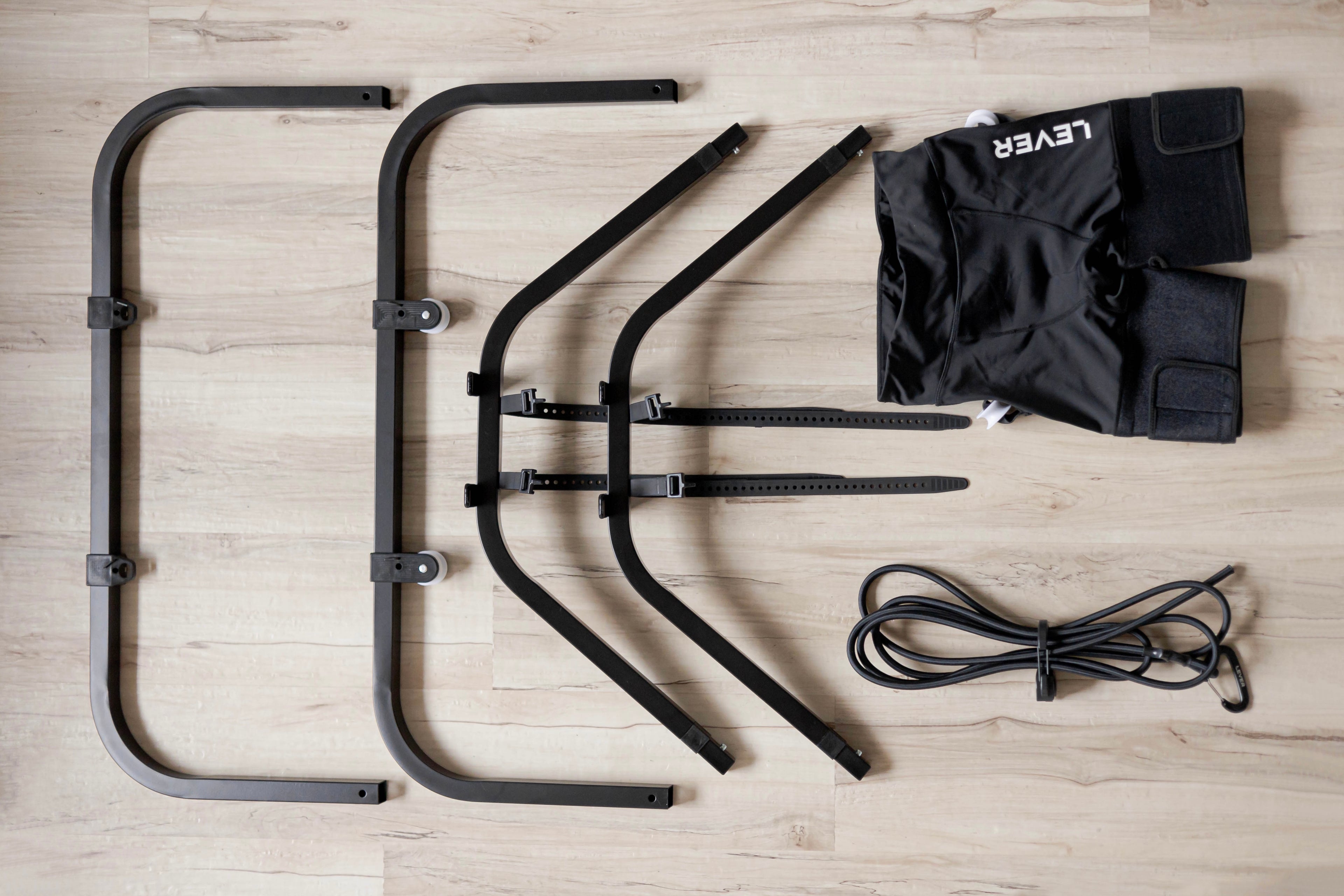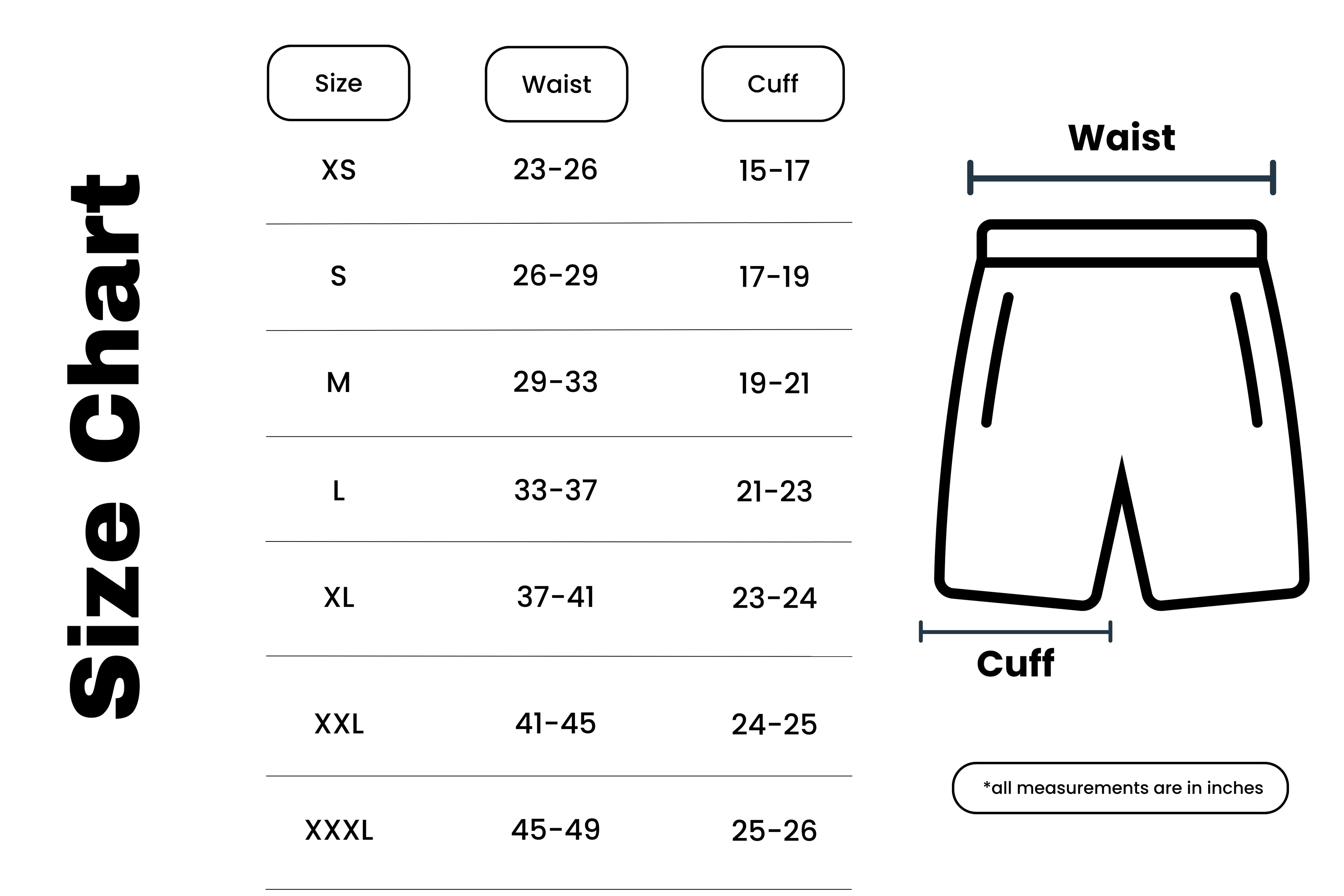A World Championships marathoner on injury lessons, hot‑weather racing, and the body‑weight support tool that keeps him consistent
Interviewee: Reed Fischer (adidas, Tinman Elite)
Reading time: 7–9 minutes
Watch Reed Fischer Youtube LEVER SERIES
Quick Summary
-
In 2019, Reed developed a foot stress reaction three weeks before his planned marathon debut. It reshaped how he trains.
-
Today he uses LEVER proactively especially for doubles, heavy weeks, and any early “is this an injury?” niggle.
-
A short pool/LEVER block helped him turn a flare‑up into a 45‑second PR at the 2025 Houston Half.
-
Philosophy: 95% fit and healthy on the start line beats 100% fit and broken.
“There are days you have to be smart and patient. Take the cross‑training day or the rest day and trust it will pay dividends.” — Reed Fischer
Meet Reed
“I’m Reed Fischer. I’m a professional marathon runner for adidas and Tinman Elite—two‑time World Championships qualifier. I was 9th at the 2024 U.S. Olympic Marathon Trials, and I’ll represent Team USA in the marathon at the 2025 World Athletics Championships in Tokyo.”
As of this conversation, Reed was three weeks out from race day. Conditions in Tokyo look hot and humid—near 80°F at the start with a 70°+ dew point—a true war of attrition. Reed welcomes it: he’s never finished outside the top 10 in marathons that start above 70°F, and his build has included specific heat prep alongside teammates CJ Albertson and Clayton Young on the U.S. men’s squad.
“If I ever had the chance to run in a Team USA jersey, I wouldn’t say no. It never gets old.”
The Injury That Changed His Mindset
Back in 2019, three weeks before the Chicago Marathon, Reed felt that familiar runner’s heartbreak: a stress reaction in his foot. He missed race day and spent months rebuilding.
What stung most wasn’t only the DNS—it was the mindset. He’d tried to bargain with the timeline: “They say 8–12 weeks? I’ll do 4–6.” The experience rewired his approach.
Key lesson: Treat every injury as feedback. Make specific changes so the same mistakes don’t repeat.
Since then, Reed hasn’t had another bone injury. Soft‑tissue flare‑ups still happen—as they do for every hard‑training runner—but he meets them differently.
Healthy > Heroic: Reed’s New Rules
1) Be proactive. If something feels off, he takes a pool day or moves the session to LEVER instead of forcing the planned run.
2) Differentiate pain vs. training fatigue. Experience helps—but so does giving yourself permission to pivot.
3) Protect the start line. “95% fit and healthy beats 100% fit and injured.”
4) Don’t let geography trap you. Six miles from home on trails with a sore foot? That’s a sunk‑cost trap. Indoors with LEVER lets you “play‑test” how a niggle responds—without digging the hole deeper.
“2019 Reed goes out for that easy 12. 2025 Reed gets on LEVER—same volume, less pounding, same aerobic stimulus.”
How Reed Uses LEVER (And Why)
Reed has used LEVER since 2020, right after that bone stress episode.
-
For doubles & high weeks: If he’s tired and has a 6‑mile second run, he’ll do it on LEVER same work, less impact.
-
For early warning signs: A 1–3 day micro‑block on LEVER quells most flare‑ups while maintaining rhythm.
The Houston Example
Ten days before the 2025 Houston Half, Reed felt that same foot grumbling. Rather than plow ahead, he did:
-
Day 1: Pool.
-
Days 2–3: LEVER running, gradually adding body‑weight back.
-
Day 5: First full body‑weight run outdoors.
-
Day 7: Tune‑up workout.
-
Race day: 45‑second PR and one of the 15 fastest U.S. half‑marathon times ever.
“LEVER gives me peace of mind. I still run, still get the stimulus it just looks a little different while I protect the tissue.”
Who Benefits Most from LEVER?
Short answer: Any runner training with intention.
-
If you’re stacking quality weeks, chasing a BQ, an OTQ, or a personal best at any pace, LEVER reduces the “impact tax.”
-
If you travel, LEVER’s small form factor fits planes, trains, and automobiles, and it mounts quickly to your treadmill.
-
If you’re returning from injury, you can precisely offload 5–50+ lbs to respect medical guidelines while rebuilding.
-
If you’re brand new to running and not stressing the system yet, you may not need it right now—but it’s powerful once training load climbs.
“You’ll be the healthy one at the gym and probably the person everyone asks about the cool setup on the treadmill.”
Reed’s Practical Playbook (Save This)
When a niggle pops up:
-
Pause & assess. Ask: Pain or normal fatigue? If unsure, assume caution.
-
48–72 hours of protection. Swap one session to the pool and 1–2 sessions to LEVER. Keep cadence, keep rhythm.
-
Ramp body‑weight gradually. Start with more offload; add body‑weight back as symptoms calm.
-
Return to full body‑weight only when pain subsides during/after LEVER sessions.
This is Reed’s personal approach. Always follow your clinician’s guidance.
Favorite Quotes
-
“95% fit and healthy on the start line beats 100% fit and not healthy.”
-
“LEVER lets me play‑test a niggle without digging a deeper hole.”
-
“If I get to wear a Team USA jersey, I’m saying yes.”
About Reed Fischer
-
Team: adidas, Tinman Elite
-
Highlights: Two‑time World Championships qualifier; 9th at the 2024 U.S. Olympic Marathon Trials; multiple World Marathon Major top‑10 finishes.
-
2025 Target: Marathon at the World Athletics Championships, Tokyo.
Key Takeaways for Everyday Runners
-
Consistency wins. Use LEVER to protect key weeks rather than boom‑and‑bust.
-
Make smart swaps. Pool/LEVER days keep aerobic momentum while tissues calm.
-
Travel‑proof your training. A portable setup makes staying healthy realistic on the road.
-
Healthy start lines beat heroic training logs. Always.
Bring Reed’s Approach Into Your Training
-
Ready to train smarter? Explore LEVER GO+ for precise offloading when you need it and normal miles when you don’t.
-
Have questions about setup or sizing? Chat with our team or book a consult.
-
Coaches & teams: Ask about bulk pricing and trials.











